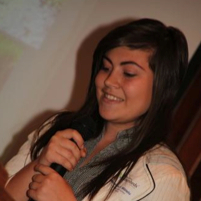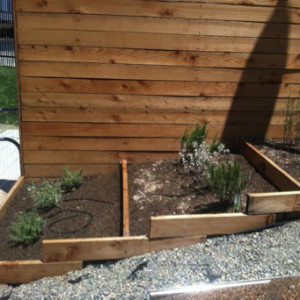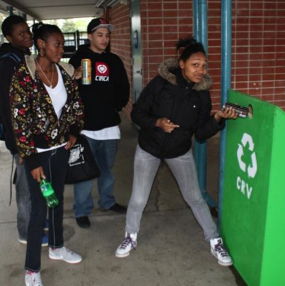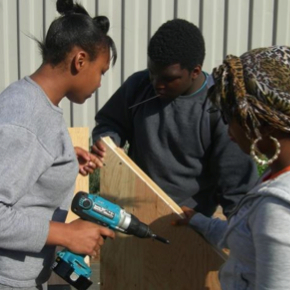2012 Colusa, CA, USA
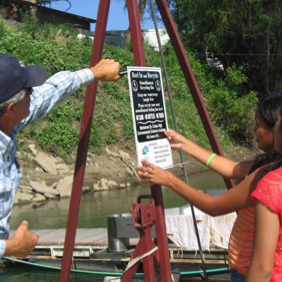
In looking into water issues in their small community, Aimee Galvez and Yajaira Cruz saw that there was a lot of fishing line thrown into the river by anglers who seemed unaware of the danger this could cause to local wildlife. Their idea was to place monofilament recycling containers at four local boat ramps and landings. They believed that by providing a place to recycle line and signs to encourage use, they could reduce the amount of line left in the river or on the water’s edge.
To start the process they first designed the aluminum signs that would be placed on top of the containers. The signs urged anglers to “Reel in and Recycle” to help keep the Sacramento River “tangle free” as used fishing line can pose hazards to wildlife, birds, and aquatic species. The signs also explained that the Colusa High School Environmental Science Academy would be maintaining the containers and collecting the line to be sent in for recycling.
Aimee and Yajaira then built the containers themselves out of PVC pipe, screws, and hose-camps.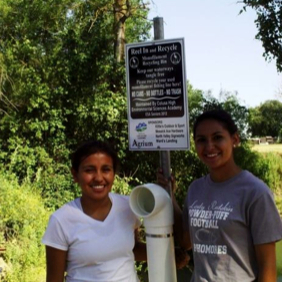 They visited each landing ahead of time to see where the best place would be to put the containers, conferring with the landing owners and staff. With full support and permission of the landing operators, they installed the containers and signs. Nutrien provided $342 in implementation funds for the project, which will be an ongoing effort carried on by the students at Colusa High School during Environmental Science Academy service hours. They are thankful that they were able to make their idea a reality and provide a simple solution to a problem in their watershed!
They visited each landing ahead of time to see where the best place would be to put the containers, conferring with the landing owners and staff. With full support and permission of the landing operators, they installed the containers and signs. Nutrien provided $342 in implementation funds for the project, which will be an ongoing effort carried on by the students at Colusa High School during Environmental Science Academy service hours. They are thankful that they were able to make their idea a reality and provide a simple solution to a problem in their watershed!
